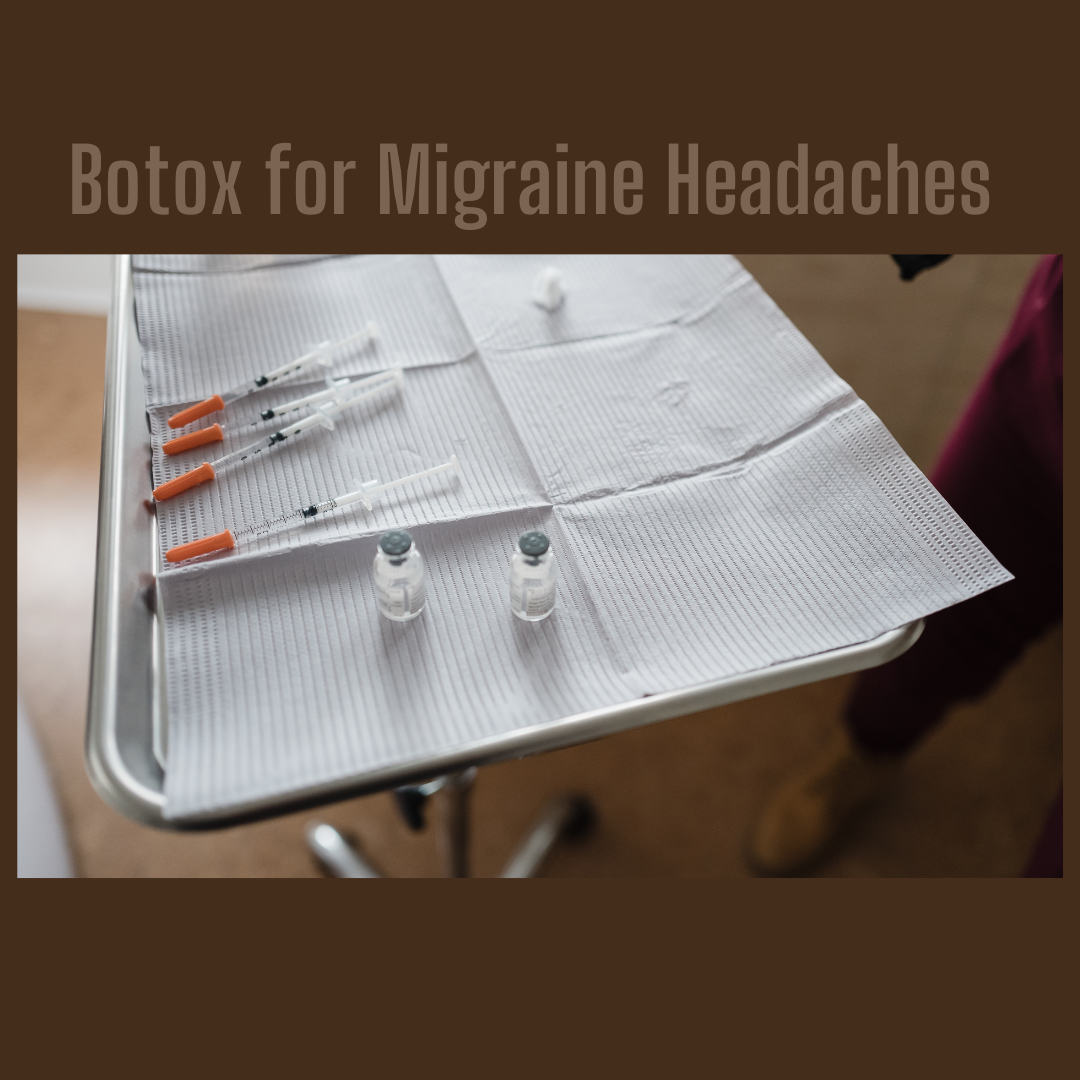Botox for Migraine Headaches
There are so many uses for botulinum toxin A (AKA Botox) that extend outside the aesthetic realm. As my experience in aesthetics grows, so too does my competence and confidence in using Botox for therapeutic purposes. I love having tools in my box that can positively impact one’s quality of life. In 2010, the FDA approved Botox for migraine treatment, and it is a welcome support to the sometimes ceaseless and definitely debilitating experience. As someone who experiences migraines myself, I firsthand understand how difficult they can be.
What is a migraine? A migraine is a headache that can last hours to days and can be accompanied with nausea, vomiting, and sensitivity to light. I have self diagnosed my headaches as migraines because I’ll get nauseous and they last for a good day. Migraines are considered chronic when they occur at least fifteen days out of the month and Botox is FDA approved for chronic migraines. Studies reveal that the use of Botox for chronic migraines may reduce the number of headaches per month by 2 (1). Even if you don’t get migraines enough to be classified as chronic, Botox still may be worth consideration.
While migraines are common, there is a wide range of how often they are experienced, and we would consult to determine if you are a good candidate for treatment. We will have an evaluation process to discuss the areas of notable tension that come with migraine onset, as well as which regions of the head experience the most ache. Based on the location of the headache, we can isolate and treat associated muscles, or do the full 140 unit migraine protocol.
The treatment pattern for migraine Botox will include select facial muscles and the muscles of the the head, neck and/or upper trapezius. According to Johns Hopkins, When you have a migraine, your body releases neurotransmitters and other chemicals associated with pain. Botox interrupts the pathway of pain transmission between the brain and nerves,and therefore offers relief.
Last week I injected a family member who suffers from frequent migraine headaches using the full 140 unit migraine protocol. We treated her frown lines, forehead, crows feet, temporalis, occipital, paraspinal, and trapezius muscles. The jury is still out as to how much relief she is offered, but I am hopeful and excited for results.
While Botox is not a first line of defense for migraine relief, it is a long-game approach that can help to structurally relieve tension in the head, neck, and shoulders. For those of us who suffer from migraines, its worth consideration to add this into our repertoire of potential relief.
If you’re curious about seeing if you are a candidate for migraine treatment, schedule a complimentary consultation. We will talk about your experience, symptoms, and benefits and potential risks with Botox for your migraines.
Resources
https://www.ncbi.nlm.nih.gov/pmc/articles/PMC6513576/


